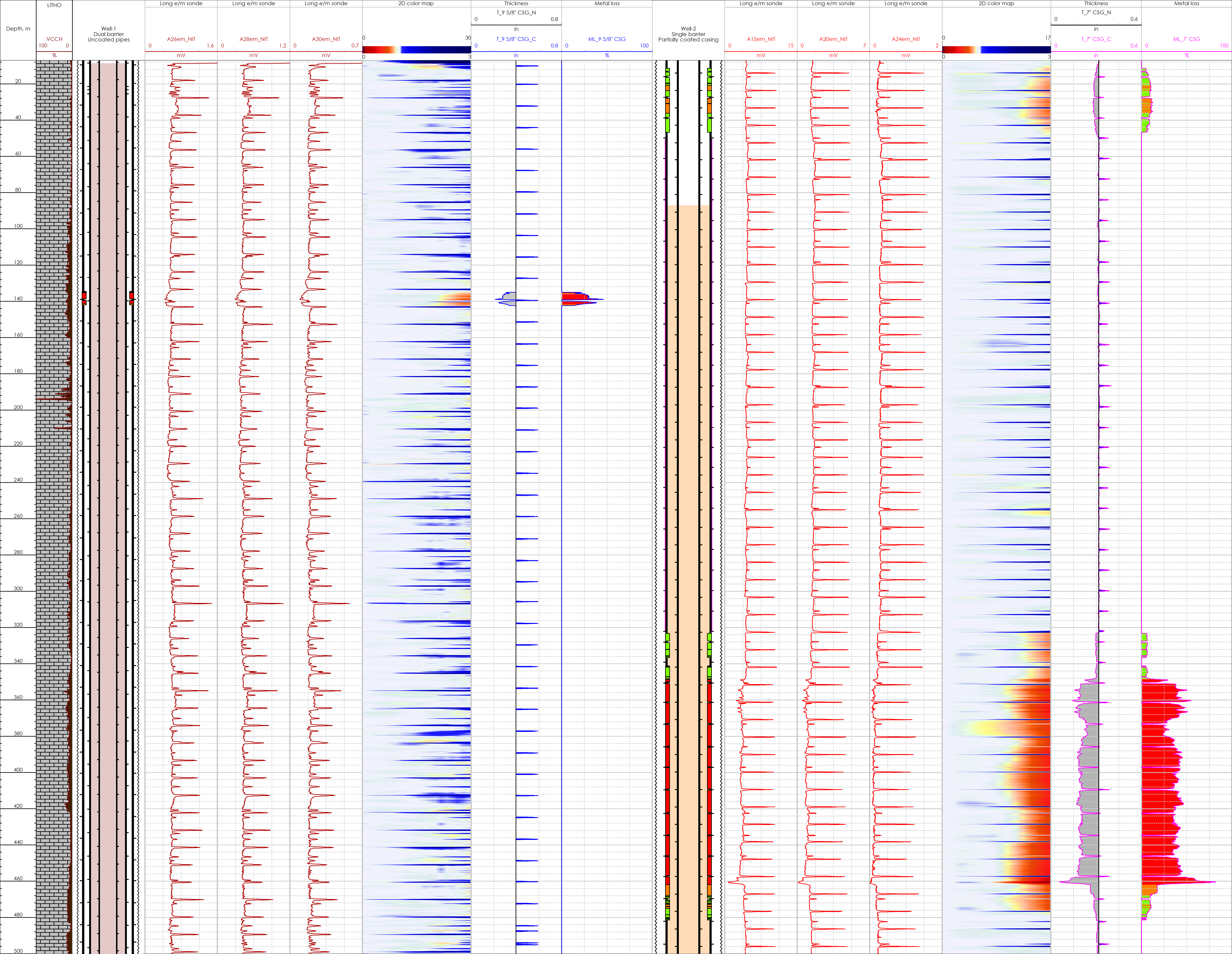Integrity Challenge
It is important to have a good cement bond in the annulus, for example by using a multistage packer and having adequate centralization. External coating on the outer pipe will lessen the risk of corrosion on the outer pipe which will also minimize corrosion migration from the outer pipe to the inner pipe. This is especially key if the outer pipe has poor cement quality or no cement and is exposed to a corrosive aquifer. Multiple barrier failure can lead to catastrophic consequences such as an oil leak to surface which could result in harm to personnel, the environment, the asset and company reputation.
Corrosion Logging Result
One example of sub optimal external coating on the outer casing is shown below:
External coating on casing was introduced to the oil industry in the beginning of 2000 therefore all wells which were drilled before this will have no external coating. Most of the wells were completed with dual barriers across the upper section due to total losses during the drilling phase and poor cement quality.
A dual barrier oil producer is presented on the left side in the snapshot shown below. The well was drilled and completed in 1995 with a 9 5/8” surface casing and a 7” production casing. EMDs corrosion logging was conducted in 2013. The data indicated severe corrosion in the 9 5/8” casing at 133-143 m. In the 17 years since drilling the maximum metal loss had reached almost 50%. The results are similar in other wells with the same completion design: metal loss on the surface casing was evident at an interval 130-240 m with differing levels of severity.
When external coating casing became available well designs were changed to a single string of partially coated casing to minimize costs. Based on corrosion data results, coated casing joints were installed across areas where corrosion had occurred in the past. The remainder of the casing string was uncoated.
A single barrier oil producer is presented on the right side in the snapshot below. The well was drilled in 2015 and was completed with a single 7” casing with external coating from 50- 324 m, the remainder of the string was uncoated. EMDs corrosion logging was conducted in 2020, 5 years after the well was completed with the main objective to check the integrity status of the well and the efficiency of the external coating. Corrosion data indicated that the 7” casing has 2 extended intervals of corrosion above and below the coated area. The upper interval 11-45 m with maximum metal loss of 15%, the lower interval 324-484 m with maximum metal loss of 80%. There is a possible through wall defect at 460 m. It appeared that due to the potential difference between coated and uncoated areas, corrosion migrated above and below the coated area.
The well was immediately included in the remedial operational plan and a month later the well was worked over. A retrievable bridge plug (RBP) was run to 550 m and the pressure test of the 7” casing failed. A 5.5” scab liner was run from surface to 700 m. Despite running the partially externally coated casing string the life of the well was only 5 years until there was a well integrity failure.
This example clearly demonstrates that the interval of coated pipe should not be placed just across the interval of expected corrosion. All the uncemented i.e. exposed pipe should be coated. This will minimize the effects of corrosion.
All case studies
Looking for more information?
Get in touch with us and our representative will get back to you
Contact Us



